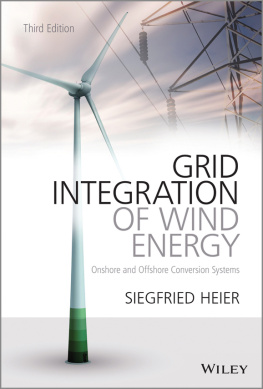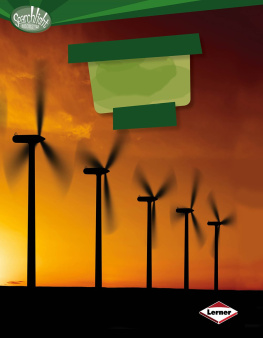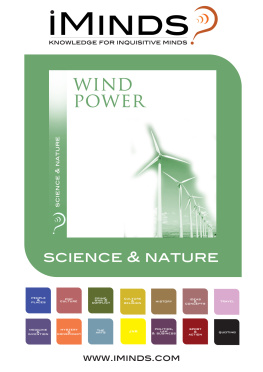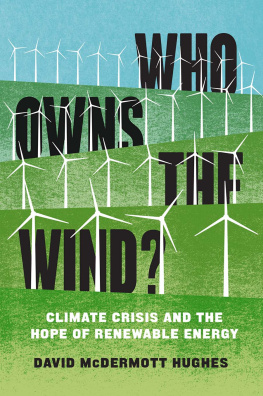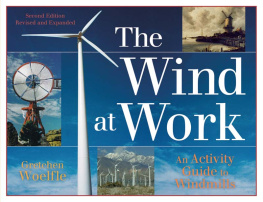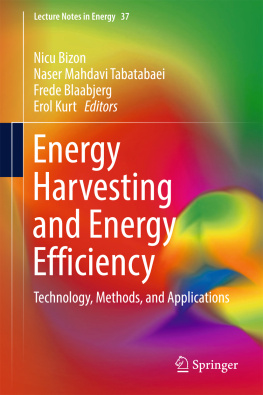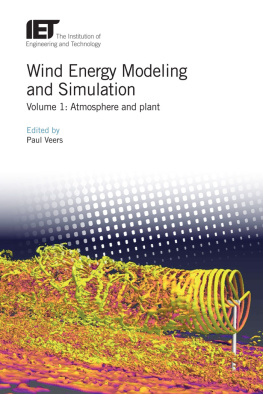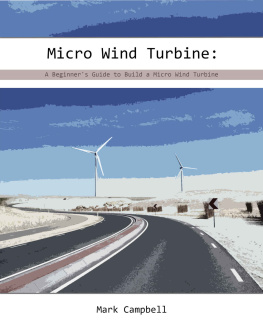
Originally published in the German language by Vieweg+Teubner, 65189 Wiesbaden, Germany, as Siegfried Heier: Windkraftanlagen. 5. Auflage (5th Edition) Vieweg+Teubner | Springer Fachmedien Wiesbaden GmbH 2009
Springer Fachmedien is part of Springer Science+Business Media
This edition first published 2014
2014, John Wiley & Sons, Ltd
Registered office
John Wiley & Sons Ltd, The Atrium, Southern Gate, Chichester, West Sussex, PO19 8SQ, United Kingdom
For details of our global editorial offices, for customer services and for information about how to apply for permission to reuse the copyright material in this book please see our website at www.wiley.com.
The right of the author to be identified as the author of this work has been asserted in accordance with the Copyright, Designs and Patents Act 1988.
All rights reserved. No part of this publication may be reproduced, stored in a retrieval system, or transmitted, in any form or by any means, electronic, mechanical, photocopying, recording or otherwise, except as permitted by the UK Copyright, Designs and Patents Act 1988, without the prior permission of the publisher.
Wiley also publishes its books in a variety of electronic formats. Some content that appears in print may not be available in electronic books.
Designations used by companies to distinguish their products are often claimed as trademarks. All brand names and product names used in this book are trade names, service marks, trademarks or registered trademarks of their respective owners. The publisher is not associated with any product or vendor mentioned in this book.
Limit of Liability/Disclaimer of Warranty: While the publisher and author have used their best efforts in preparing this book, they make no representations or warranties with respect to the accuracy or completeness of the contents of this book and specifically disclaim any implied warranties of merchantability or fitness for a particular purpose. It is sold on the understanding that the publisher is not engaged in rendering professional services and neither the publisher nor the author shall be liable for damages arising herefrom. If professional advice or other expert assistance is required, the services of a competent professional should be sought.
Library of Congress Cataloging-in-Publication Data
Heier, Siegfried.
[Windkraftanlagen im Netzbetrieb. English]
Grid integration of wind energy / Siegfried Heier ; translated by Rachel Waddington. Third editon.
pages cm
Translation of: Windkraftanlagen im Netzbetrieb.
Includes bibliographical references and index.
ISBN 978-1-119-96294-6 (hardback)
1. Wind power plants. 2. Wind energy conversion systems. 3. Electric power systems. I. Title.
TK1541.H3513 2014
621.312136 dc23
2013041087
A catalogue record for this book is available from the British Library.
ISBN: 978-1-119-96294-6
Preface
In the long run, an ecologically sustainable energy supply can be guaranteed only by the integration of renewable resources. Besides water power, which is already well established, wind energy is by far the most technically advanced of all renewable power sources, and its economic breakthrough the closest. With a few exceptions, wind power will be used mostly for generating electricity.
Just three decades on from the 50 kW class machines of the mid-1980s, the development of wind turbines has led to production converters with outputs in the 3 MW range. Five to ten megawatt turbines are currently being launched in the market. In the development of these machines, successful techniques and innovations originating from small- and medium-sized turbines were carried over to larger ones, and this has led to a considerable improvement in the reliability of wind turbines. The technical availability currently achieves average values of approximately 98%. Furthermore, economic viability has increased enormously. As a result, wind energy has experienced an almost unbelievable upsurge and has already far exceeded the contributions of water power.
The rapid development of wind power has awakened strong public, political and scientific interest, and has triggered widespread discussion over the past few years, much of it concerning the degree to which nature, the environment and the electricity grid can withstand the impact of wind power.
If political requirements regarding the reduction of environmental pollution are to be met, long-term growth in the use of wind power must be the focus. Since obtaining electricity from the wind currently offers the most favourable technical and economic prospects of all the sources of renewable energy, it must be assigned the highest priority. Due to the fact that turbine sizes are still increasing, a high degree of grid penetration must be expected (regionally at any rate), meaning that the connection of wind turbines could come up against its technical limits. This is already the case today in some instances.
The objective of a forward-looking energy supply policy must therefore be to utilize the existing grid as well as possible ones for the supply of wind power. This is made possible by the use of turbines with good grid compatibility in connection with measures for grid reinforcement. In assessing grid effects, control operations and the electrical engineering design of wind turbines play a significant role. The themes developed in this work are therefore particularly concerned with this topic.
This edition of the book has been updated to cover important innovations in this rapidly changing technology in terms of energy converters, generators and controls, grid integration and development. Important additions were made especially in view of offshore use of wind energy. This has resulted in special importance being paid to network connections at sea and on land. The layout of the book has also been updated to achieve a consistent format, and a number of new illustrations have been included. A great deal of new material has also been added to cover changes in legislation.
This book is the result of a 37 years continuous work in research and development, especially as Head of Wind Energy Research and Professor at the University Kassel, in the Electrical Energy Supply Department of the Institut fr Elektrische Energietechnik. Close cooperation with the Institut fr Solare Energieversorgungstechnik (ISET) e.V. (now Fraunhofer Institut fr Windenergiesysteme IWES, Kassel) brought with it a considerable broadening of the horizon of experience. My special thanks go to the founder of the ISET, Professor Dr Werner Kleinkauf. His suggestions and our technical discussions have had a considerable influence on this work.
The help and support of Ms Katherina Messoll, Dr.-Ing. Alejandro Gesino, Dipl.-Ing. Christof Dziendziol. Dipl.-Ing, Adit Ezzahraoui, Dr.-Ing. Gunter Arnold, Dr Boris Valov, Dipl.-Ing. Michael Durstewitz, Dr.-Ing. Martin Hoppe-Kilpper, Dipl.-Ing.Berthold Hahn, Dipl.-Ing. Martin Kraft, Dipl.-Ing. Volker Konig, Dipi.-Ing. Werner Dring, Dipl.-Ing. Bernd Gruss, Dr-Ing. Oliver Haas, Dr.-Ing Rajeh Saiju, Mr Thomas Donbecker, Mr Bernhard Siano, Mr Martin Nagelmilller, Ms Dipl.-Des. Renate Rothkegel, Frau Melanie Schmieder, Ms Anja Clark-Carina and Ms Judith Keuch have contributed greatly to the success of this book.
My grateful thanks also go to ENERCON GmbH for kindly granting permission to use the image of the wind turbine in the design of the front cover.
This book is intended not only for students in technical faculties. The procedural notes and experimental results will also be of great help to engineers both in theory and practice.
Next page
